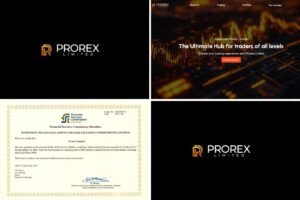From Simplicity to Signals: How Index Funds Found a Place in Automated Trading Strategies
If you asked an investor in the 1970s about automated trading strategies, chances are you’d get a blank stare. The term barely existed. Index funds, on the other hand, were just beginning—and not everyone was convinced they’d last.
Fast forward to today, and index funds have become a key ingredient in many automated trading strategies. So, why would a passive product work so well with tech-powered trading systems? Let’s walk through the timeline to find out.

1975: Index Funds Set the Stage for Automated Trading Strategies
In 1975, Jack Bogle, founder of Vanguard, introduced the first index mutual fund for the public. His idea was simple: mimic the S&P 500 and avoid excessive management. Initially, critics laughed and called it “Bogle’s folly.” However, over time, investors began to see the benefits.
The fund offered low fees, minimal trading, and steady long-term exposure. For many investors, that simplicity was exactly what they needed.

1980s–1990s: Index Funds Rise, While Trading Tech Remains Niche
As more competitors joined in, index funds gained traction. They provided lower costs and consistently competitive returns. At the same time, automated trading strategies remained confined to Wall Street’s elite.
High-frequency models and black-box systems were becoming more common in hedge funds. Nevertheless, average investors didn’t have access to those tools—yet.

2000s: Automation Reaches Retail—Index Funds Stay Reliable
With the rise of online brokers, basic automation tools became available to retail investors. Features like auto-rebalancing, stop-loss orders, and simple scripts allowed more people to explore automation.
Meanwhile, index funds quietly held their ground as solid portfolio staples. In many cases, when bots needed stable assets to anchor a portfolio, index funds were the go-to option.

2010s: Index Funds and Automated Trading Strategies Start to Merge
Then came the robo-advisors. Companies like Wealthfront and Betterment began offering automated portfolio management. Unsurprisingly, they leaned heavily on index funds as their foundation.
Around this time, retail traders also began experimenting with APIs and building their own bots. Many of these strategies included automated rules to shift capital into index funds during volatile periods. As a result, the quiet partnership between automation and indexing grew stronger.

2020s: How Index Funds Power Today’s Automated Trading Strategies
Today, automation is everywhere—from entry-level bots to sophisticated AI-based platforms. In most cases, index funds are embedded within these systems. For instance, some traders program rules like “if VIX > 25, shift funds to S&P 500.”
In addition, many investors automate monthly contributions to index ETFs. Others rotate their exposure across sectors or global regions, using index funds as anchors. Ultimately, it makes sense—automation thrives on predictability, and index funds deliver that.

What’s Next for Index Funds and Automation?
Looking ahead, it’s possible index funds will always remain foundational. They offer clarity and calm inside increasingly complex trading systems. On the other hand, some believe advanced AI may lead strategies toward more dynamic instruments.
Still, one thing is clear: the relationship between index funds and automated trading strategies didn’t appear overnight. Instead, it evolved gradually—decades of quiet, consistent alignment. So whether you prefer bots or advisors, index funds will likely keep doing the heavy lifting in tomorrow’s tech-powered portfolios.
Relevant News: Why Countries Are Betting Big on RWA: A Legal and Regulatory Deep Dive




